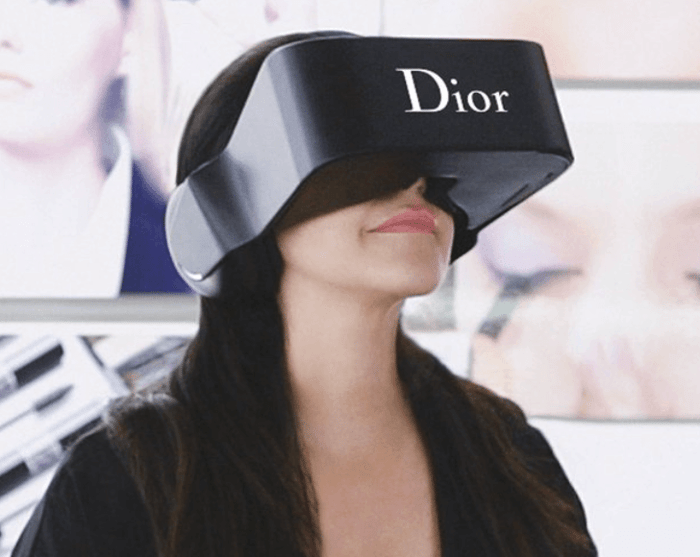Digital Twins in Fashion: Transforming Design, Production, and Customer Experience
Table of Contents
The first question that goes on mind when talking about this trope it's about the concept itself: what are these "digital twins"? No, it has nothing to do with siblings that are into technology but it's not that far; digital twins are virtual representations of physical products, systems, or processes. In the context of fashion, a digital twin can be a realistic 3D model of a garment, a virtual version of a production process, or even a digital clone of a customer. These models are powered by data and updated in real time, allowing designers and manufacturers to monitor, simulate, and improve every stage of a fashion item’s lifecycle.
These virtual replicas are transforming the way designers, brands, and consumers interact with clothing, from the first sketch to the final sale.
Unlike static 3D renders, this avatars are dynamic and interactive; they can respond to changes, offer predictive insights, and reflect how a product behaves in different environments. This level of accuracy is especially valuable in an industry where fit, form, and aesthetics are essential.

For designers, they offer a new way to visualize and refine their creations. Rather than relying solely on sketches or physical prototypes, they can work with detailed virtual garments that simulate fabric movement, structure, and interaction with the body. This allows for more experimentation and iteration without wasting materials.
With the help of that twins, fashion designers can instantly test variations in color, pattern, and cut, reducing the time from concept to final piece. These models also improve communication between design teams, helping them make more informed decisions and maintain consistency across collections.
“The fashion industry is at the cusp of a digital revolution, and digital twins are paving the way for transformative change.” — Anna Wintour
Smarter, More Sustainable Production Processes
In the production stage, digital twins can represent entire manufacturing systems. By creating a virtual model of the supply chain, brands can identify inefficiencies, test new workflows, and anticipate challenges before they happen. This kind of simulation leads to smarter resource allocation, less waste, and faster production timelines.
Digital twins can also be used to track individual garments throughout their journey. From sourcing materials to assembly and shipping, each step can be monitored and optimized in real time. This visibility helps reduce environmental impact and ensures more ethical, transparent practices.

Sustainability is a major concern in fashion, and this tool provides powerful tools to address it. By reducing the need for physical samples and optimizing production methods, digital twins contribute to more eco-friendly practices. They enable brands to test materials, forecast demand, and plan collections with precision, minimizing overproduction and excess inventory.
In addition, these avatars can support circular fashion initiatives. For instance, they can be used to track a garment’s entire lifecycle, from creation to resale or recycling, helping both consumers and brands make more conscious decisions.
Revolutionizing the Customer Experience
One of the most exciting applications of digital twins in fashion is in enhancing the customer experience. With virtual avatars or digital versions of themselves, shoppers can try on clothing online and see how it fits and moves before making a purchase. This interactive and personalized approach increases confidence in buying decisions and reduces the likelihood of returns. Brands can also use digital twins to create personalized styling experiences. By analyzing customer preferences and behaviors, the system can suggest looks, sizes, or combinations tailored to each individual. This level of customization helps brands build deeper relationships with their audiences.
E-commerce platforms are beginning to integrate digital twin technology to improve how products are presented and sold. Interactive 3D garments, realistic product simulations, and virtual try-on features are becoming more common, offering shoppers a more engaging and immersive experience.

These tools not only make online shopping more convenient, they also help bridge the gap between digital browsing and the physical act of trying on clothes. As a result, digital twins are improving conversion rates, reducing return costs, and elevating overall satisfaction in online retail.
How Modelia Uses Digital Twins to Empower Designers
Among the companies embracing digital twin technology is Modelia, a platform that empowers fashion creators to visualize their designs with virtual models. By turning a simple image of a garment into a lifelike 3D visualization, Modelia allows brands to present their collections with style and precision, without the need for physical samples or traditional photoshoots.
Modelia’s use of digital twins supports faster design workflows, enables creative freedom, and contributes to more sustainable content creation. It is a valuable tool for independent designers, small businesses, and established brands alike who want to modernize their approach and reduce their environmental footprint.
 Digital twin created with Modelia
Digital twin created with ModeliaThe Future of Fashion
As technology advances, the role of digital twins in fashion will only grow. From integrating artificial intelligence for smarter simulations to using real-time data from wearables, these virtual models will become increasingly detailed and responsive. In the near future, consumers may be able to build complete digital wardrobes, try on outfits in virtual spaces, or even own digital-only fashion items.
In addition to creative and commercial benefits, digital twins also present new possibilities for collaboration, education, and inclusivity. They offer tools for remote teamwork, virtual showrooms, and inclusive design practices that reflect a wider range of bodies and identities.

For example, H&M has taken a big step toward the future of fashion by introducing AI digital twins of 30 of its models using 3D scanning technology. These realistic avatars will be featured in product images and campaigns across different markets, no need for the models to be physically present which is totally a big step to the future of the fashion market.
Final Thoughts: A New Digital Era for Fashion
Digital twins are reshaping fashion from every angle design, production, and customer experience. By offering smarter workflows, immersive experiences, and sustainable alternatives, they represent a major leap toward a more modern and responsible fashion industry.
Brands that adopt digital twin technology are better positioned to adapt, innovate, and connect with their audiences in meaningful ways. As we move further into the digital age, embracing this innovation will not only enhance creative potential, it will also redefine what fashion can be.
Join the Modelia newsletter to stay at the forefront of fashion and AI innovation.
How would you rate this article:
Related Articles
- Image to Video AI: Transform Your Photos into Videos with AI
- Exploring the Future of Virtual Clothing Stores
- Transform Your Photos Using AI Editing Tools
- Design Eye-Catching Magazine Covers with AI
- What is an AI fashion show?
- Virtual Try-On Revolution: Experience Fashion, Makeup & More
- AI Clothes Swap: Revolutionizing Your Wardrobe with Virtual Outfit Transformations
- The Rise of AI-Generated Shoes in Modern Design
- The Best Clothing for Travel: Fashion Staples for Comfort and Style
- Top 5 AI Outpainting Tools to Expand and Complete Your Images with Ease
